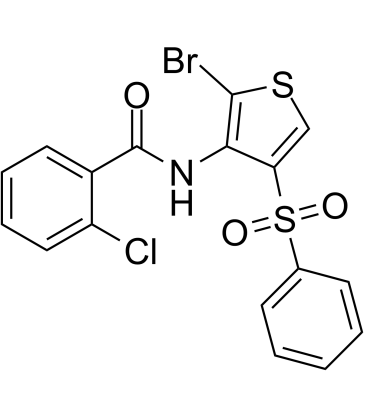| In Vitro |
BNTA (0.01-10 μM; 1-7 d) does not decrease cell viability of human osteoarthritis chondrocytes and rat primary chondrocytes[1]. BNTA (0.1 μM; 2 d) increases SOX9 protein markedly[1]. BNTA (0.1 μM; 2 d) remarkably increases the COL2A1 and SOX9 protein levels in IL1β-induced rat OA chondrocytes[1]. BNTA (10 μM; 5 d) increases proteoglycan staining in ATDC5 cells[1]. BNTA (0.01-10 μM; 6 h) upregulates the expression levels of ECM-related genes COL2A1, ACAN, proteoglycan 4 (PRG4), and SRY-box 9 (SOX9) in human OA chondrocytes[1]. BNTA (0.01-10 μM; 6 h) increases Col2a1, Acan, Prg4, and Sox9 mRNA levels, with maximum effects around 0.1 μM in IL1β-induced rat OA chondrocytes[1]. BNTA (0.01-1 μM; 2 or 3 w) enhances anabolism and inhibited inflammatory response in osteoarthritis cartilage explants[1]. Cell Viability Assay[1] Cell Line: Human OA chondrocytes Concentration: 0.01, 0.1, 1, 10 μM Incubation Time: 1, 3, 5, 7 d Result: No toxicity was observed. Western Blot Analysis[1] Cell Line: Human OA chondrocytes Concentration: 0.1 μM Incubation Time: 2 d Result: Elevated SOX9 protein compared with vehicle.
|
